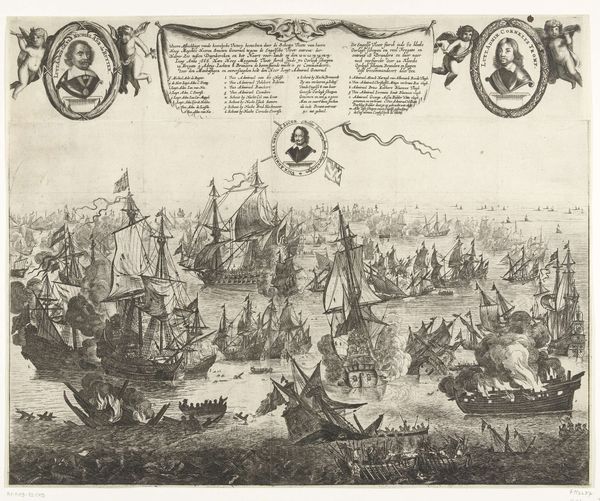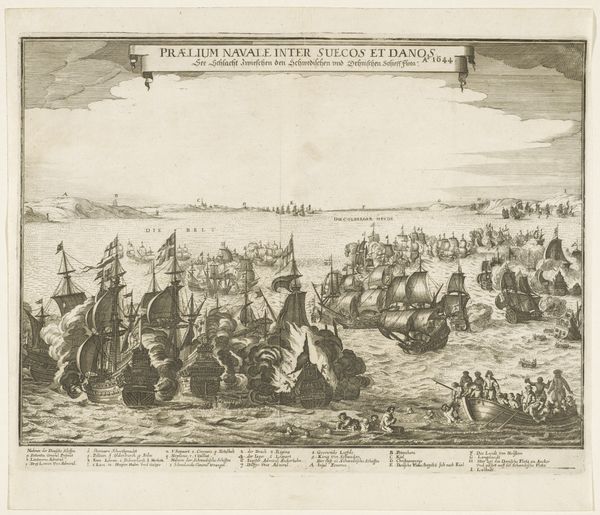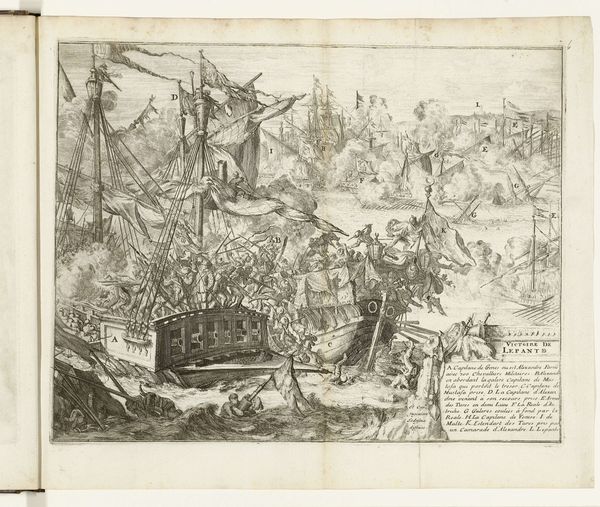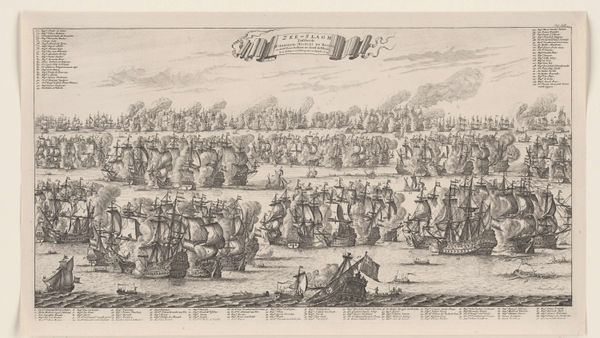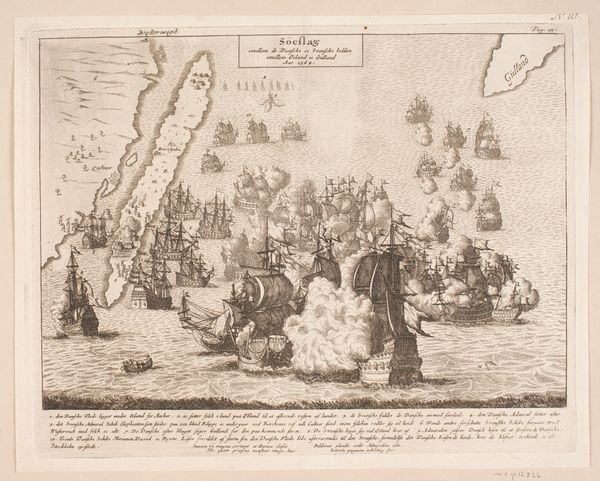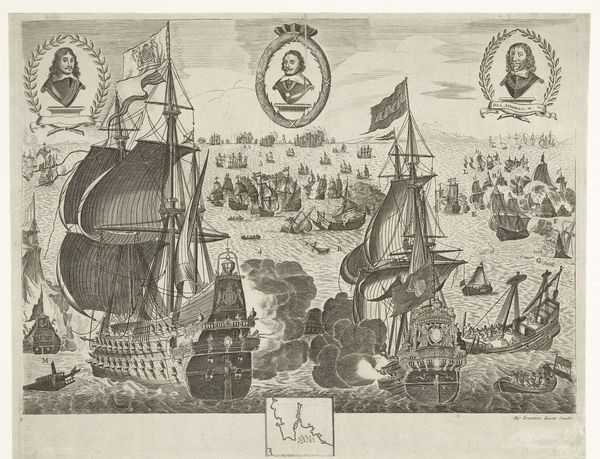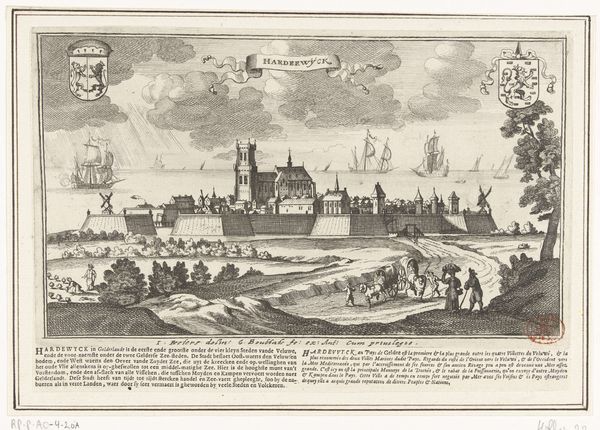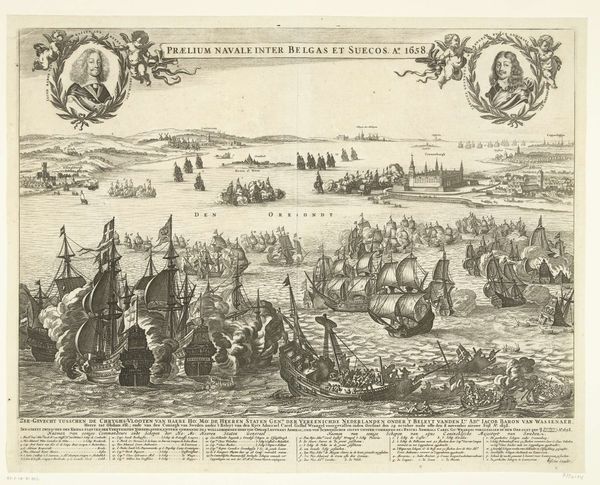
print, engraving
#
narrative-art
#
baroque
# print
#
history-painting
#
engraving
Dimensions: 264 mm (height) x 332 mm (width) (plademaal)
Curator: Before us, we have "Sea Battle at Öland, 1564", an engraving made sometime between 1678 and 1682. It is held at the SMK, the National Gallery of Denmark. It is attributed to Johann Husman. Editor: Immediately, I am struck by the intricate linework that creates such a dynamic scene. The energy conveyed by the chaotic arrangement of ships and swirling smoke is intense! Curator: It's certainly a striking portrayal of naval warfare during the Northern Seven Years' War. Öland, being an island off the Swedish coast, was a strategic point of contention, and the battle was critical to control of the Baltic Sea trade routes. Prints like this were often commissioned to glorify victories and shape public perception. Editor: The composition draws the eye directly into the swirling center of conflict. Note how Husman uses the rising smoke and strategically placed vessels to create depth within this monochrome piece, guiding us through the havoc. Curator: Exactly. It’s not just about aesthetics though; the inscriptions provide details about the key figures and the order of events, transforming the artwork into a form of historical record-keeping and even political propaganda. Editor: Interesting that you say that! When looking at the image, I would be curious to know what types of printing techniques Husman may have employed. Could the fineness of line texture be something that Husman wanted? Curator: Absolutely! Such intricate lines in engravings served as accessible modes of illustrating stories across the broadside format and helped disseminate such knowledge about battle occurrences, such as this, that happened during the era. This also gives a rare opportunity to show nationalistic spirit through art at such an important time period. Editor: Overall, Husman masterfully communicates movement, emotion, and even sonic intensity within what initially appears to be a simple medium of expression: monochromatic and print work. Curator: Indeed. It offers a fascinating insight into how battles were both experienced and understood within 17th-century social and political frameworks.
Comments
No comments
Be the first to comment and join the conversation on the ultimate creative platform.
